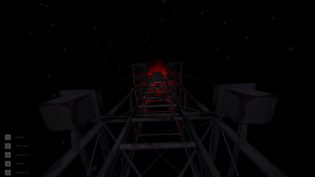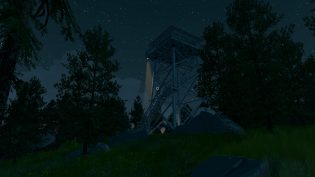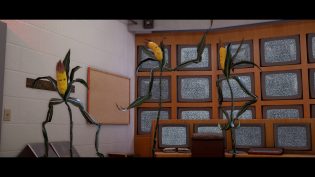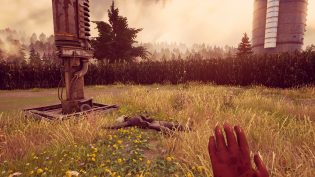Three first person view games with heavy focus on exploration and open-ended maps. Three completely different approaches to that concept. Survival, drama and comedy. Done to varying degrees of success.
Near Death is, for all intents and purposes, a survival game. Unlike the sandbox survival titles that are usually associated with “survival”, however, this game is story-driven, hand crafted with little to no random elements and, while it doesn’t avoid the concept of “crafting”, it has more in common with the permanent upgrades you’d see in a metroidvania here than collecting random junk to created another random junk. In fact, despite one open map, the game is very much linear.
Which is, probably, the biggest gripe I have with it. With the way the story progresses and the map is set up, I’m genuinely surprised the developers locked down exploration as much as they did with outright not giving you tools necessary to progress before they want you to by just making them unpickable. Which, unlike other key stuff the character would really have no reason to pick up until it becomes important, looks extremely stupid and also introduces the ugly “okay, now what” problem, when you have explored a location before you had to and have no clue that now you have to go back to it again.
All that said, this is quite a unique and amazing experience with you stumbling in extreme conditions from building to building, from room to room, searching for a warm place and something helpful to scavenge. To fix the rooms, to make navigation between buildings easier. It’s a unique concept, which, while looking less beautiful and impressive as in Cryostasis, works really well and shows how exploration games can be made and how many themes, locales and ideas are still left unexplored for truly engaging experience. I would highly recommend checking Near Death for while it is deeply flawed, it is also very fun. Also, a great game to play during hot summer.
Firewatch is a… curious game. It’s a story-driven ambiance exploration title (aka. “walking simulator”) with a both simple and complex premise. The playable character’s life is in a tough spot, so he seeks escape to rethink it and decides to work for one summer as a fire lookout in the wilderness. And most of the game is mostly about having conversations about everyday tough choices with the partner’s voice over the radio. With the more or less open map and some optional exploration being just a backdrop to the story, something to go along the idea of escaping the situation you are in via incredible adventuring, but never really going that far from it.
And the game is great at it. It always tries to hook you up with promise of something exciting, while keeping things grounded and, in the end, might very much manage to surprise you with mundane. Yet, that is also one of the reasons I couldn’t help but feel slightly disappointed with it while playing, since it never felt truly going anywhere. As is, it’s a great story-driven game that’s worth checking out. But don’t expect it to be more than what it is after the opening minutes. Unless you try to make it be so, which, I suppose, was also intentional.
Maize is… sigh… If there ever was a game to encapsulate the bad whimsical kind of horror themed comedies of the 80s, this game is exactly that. Nonsensical plot about mad scientists, soviet intelligent teddy bear spitting gibberish “russian” as a companion and words like “stupid”, “imbecile”, “idiot” and variations being about 70% of words in the script. Now, the whole concept could actually work, and that is exactly what is the saddest thing about the game is that it fails so miserably, mostly due to the fact that it recreates that vibe down to the “bad” part. Because it’s bad. Not so bad it’s good bad, but just bad as a comedy game.
And as an adventure game it seems to want to be it’s even worse, since you just run back and forth and put items on other items and paths open and close in a very linear fashion so you never “solve” anything as much as you just “do stuff”. What’s also surprising is how ugly the game often looks, despite the use of UE4, some stunning models and good animations. You can be in a very pretty looking location to just turn the corner and find yourself in a terrible “my first UE SDK map” room that looks sickeningly bad. It’s a game that could’ve been, but went very-very wrong and really isn’t worth the time.










